Proofreading, word choice, conciseness
P2
I poke my head up out of my hole and breath in the crisp air. Keen for a snack I survey the wintery landscape. A valley, framed by sharp mountains, sprawls out in front of me. The afternoon sun makes the ground glitter and sparkle. Rocks punctuate the landscape, dark shapes piggybacked with the winter snowfall. I shoot out of my hole and run underneath a snow burdened tree. A drop of water lands on my head. A drop of water? I check my winter coat up and down. White. White as the peaks of the surrounding mountains. My coat hasn’t started changing color. Why is there water?
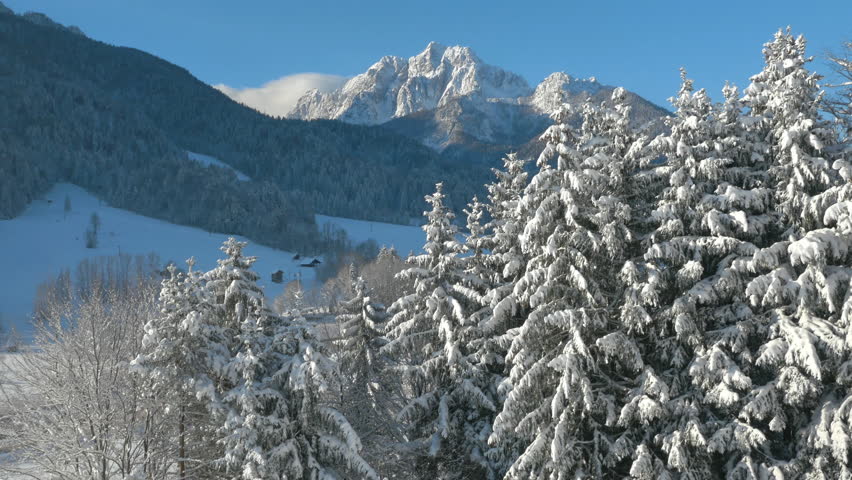
Snowy Valley
Shaking off the water I scramble up the pine tree. There could be some tasty eggs. And if not that then maybe I’ll be able to eye a juicy pika. I slink my way up to the bottom branches…nothing. The branches are slick with melted ice when I move across them. I use my sharp claws to grasp into the damp bark. As I made my way up to the top branches I begin to feel as if I’m being watched. I look around my surroundings and realize that I stick out like sore thumb. Dammit! the branches around me don’t have the snow that they usually hold. I quickly scuttle downward branch to branch as I hear a deathly quiet swoosh. I land softly in the snow and sprint for a crevice I see under a rock. For a couple heart pounding seconds the only sound are my feet frantically pattering into the ground. I throw myself headlong into the crack just as I feel a blast of air behind me. I spin around only to find myself face to face with a pair of wicked talons scrabbling at the entrance of my shelter. I lunge forward and give the right one a bite. Hot blood spurts in my mouth reminding me of how hungry I am. The predator lets out a pained screech as I hold on. I bite deeper to tell him he messed with the wrong rodent. Quickly I let go and dive back into my hole. I poke my head out and watch a white figure fly into the distance. It leaves behind a trail of bright red drops against the snow. That’ll show ‘em.
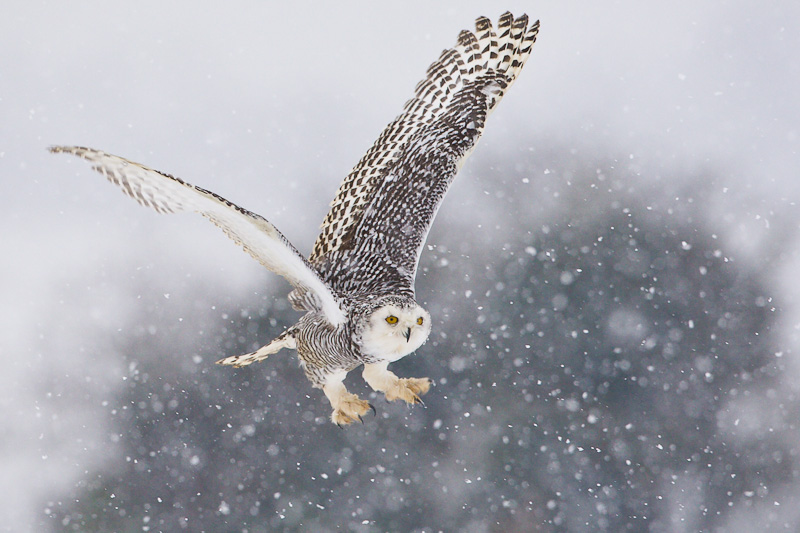
The Snowy Owl, a natural predator of the stoat
I rest and recuperate. I’m Frustrated at my conspicuousness because of the melted snow. And I feel so warm. First the snow, now I’m overheating, what is going on? Feeling safe I scurry out of my crevice and splay out in the snow to cool off. By now I’m starving and craving a juicy pika. Pointing myself in the direction of the mountains I speed off to their rocky slopes. I notice small streams of water making their way down the mountain. I’m careful to not step into any snow covered currents. An unseen stream could drag any small animal into its icy depths. It’s too early for water! I shouldn’t have to worry about this! I dart to the top of a rock to try to pick up a scent and take in my surroundings. A slight breeze rustles my white fur as I sniff the air. The musky scent of a lone pika piques my nostrils. I’m downwind of it! Positioning myself against the wind I shoot towards the scent. As I’m running another smell starts to waft around me: death, decay, exposed flesh. I suddenly hesitate. Remembering the predator, I begin to approach more cautiously. I slowly raise my head over a ridge and peer in to a snowy clearing. My eyes are immediately drawn to a twitching figure in the center. A pika. But why would it be so unsheltered? I don’t notice any blood but the smell of death still is still sharp in my nostrils. I slowly approach, suddenly wary of the sky. The pika’s head twitches and its eyes catch mine. I freeze. The eyes widen and I can tell the animal wants to get away but it just can’t seem to function. I become inquisitive and continue to approach. When I’m a foot away the twitching stops and I hear a rattling breath come from the pika. I rush forward and bite at the base of its neck, nothing. No high pitched screams and no struggling. The skin of the pika though, it’s hot to the touch. That ghastly smell isn’t coming from it though. Could this have something to do with the melted snow? I scurry to the other side of the clearing and look out. What I see shocks me. Dozens of pika lay dead in the sun. Some are still twitching, the rest in separate states of decay. At first I’m elated. I won’t have to eat for weeks! But as I stare out across the death ridden expanse I realize that I won’t be able to eat pika anymore. I solemnly drag my pika back to my den as I plan on how I’m going to survive in the future.
Overheating is one of the deadliest things a pika can experience, “Because these small mammals have adapted to cold alpine conditions, pika are intolerant of high temperatures and can die from overheating when exposed for just a few hours.” Climate change has caused these small mammals to disappear from one-third of their original habitats.[1] Coincidentally these animals are also a main source of food for the stoat, “a known predator of the pika is mustela erminea, or the stoat.”[2]
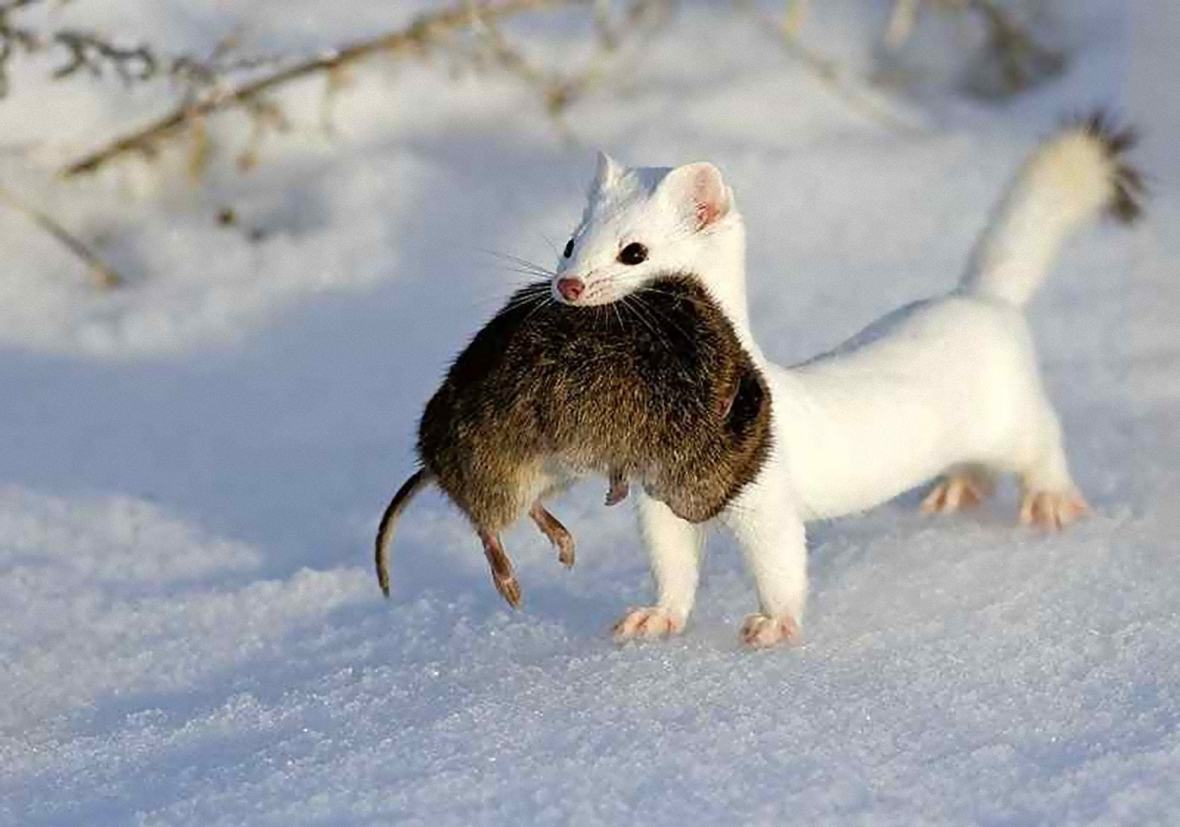
A stoat with its prey
The stoat, or ermine as it’s often called in the winter, is a small weasel like mammal that resides in cold climates throughout the northern hemisphere. All stoats originated from a common ancestor in Eastern Europe. The animal thrived during the ice age as it was able to blend in with its environment and hunt effectively. The stoat is a skilled predator that hunts night or day.[3] Its prey includes a wide range of animals from rabbit to pika. A quick moving animal, the stoat has been known to “hypnotize” its prey through sporadic and repetitious movements.[4] Small prey of the stoat are usually killed immediately through a bite at the base of their skull. Other animals, such as rabbits, die from shock after multiple bites from the stoat. A high-energy animal, the hunting grounds of the stoat are small in order to reduce the possibility of “energy exhaustion.”[5] This places a large amount of importance on having prey close by. Without an immediate food source a stoat can quickly die. Some of the natural predators of stoats include foxes, owls, and hawks.[6] Stoats are born in large litters of around eight to ten. After about twelve weeks they are able to hunt and exist independently from a family unit. When living independently stoats will live in dens that they dig in the ground or surrounding trees.
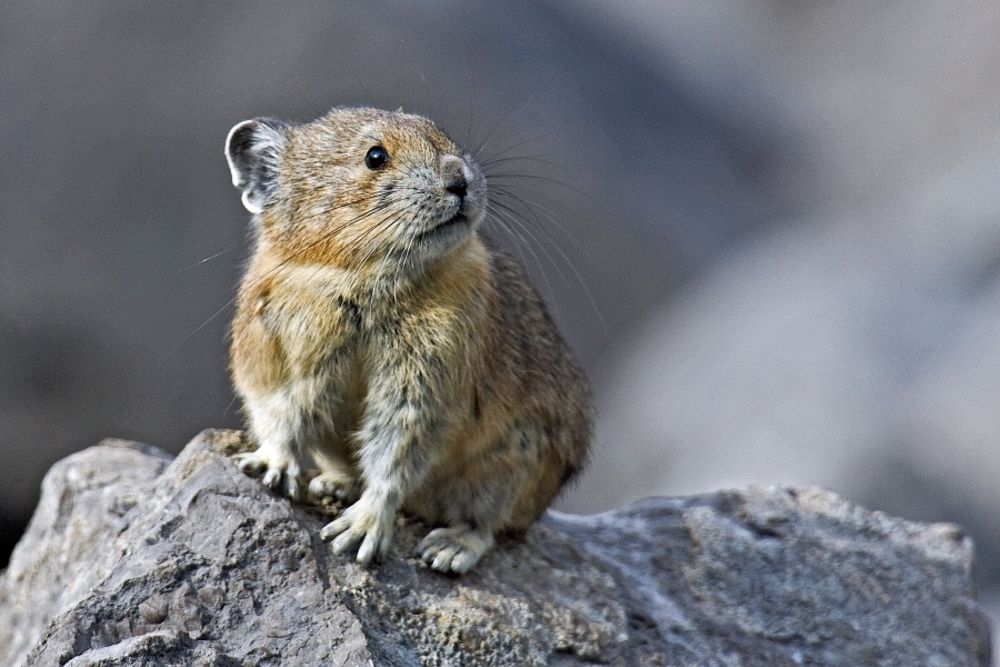
Pikas are prone to overheating
In my story the environment that the stoat resides in is a valley closed in by mountains in northern Asia. The climate is towards the end of winter where the temperature should still be well below freezing but global warming has resulted in an early spring. The resulting situation is an ermine that sticks out in a snowless environment. This creates a scenario where a predatory Snowy Owl can easily identify a scurrying stoat in snowless treetops. The surrounding mountains are also populated with pika. When the stoat searches these mountains for pika it finds that several had been killed. Unprepared for the abnormally hot day a large amount of pika have died from heat exhaustion. While this is good for the stoat in the short term the long term effects are negative. I hoped to show a small part of how global warming affects multiple animals through just affecting one directly. Just as the prey of the stoat are dying off, the stoat itself is the prey to the snowy owl. When large populations of stoat die off due to lack of food the same would be soon to follow for its own predators.

Stoat without ermine (winter) fur
Currently the largest threat to stoats are loss of habitat and loss of prey. Though not prone to overheating like the pika, the stoat relies heavily on pika in mountain environments for its food. The recent rising in temperature has resulted in a lessening of pika populations worldwide. As a consequence, stoat populations have become prone to decline. Eventually this disruption of the food chain can result in environmental instability.
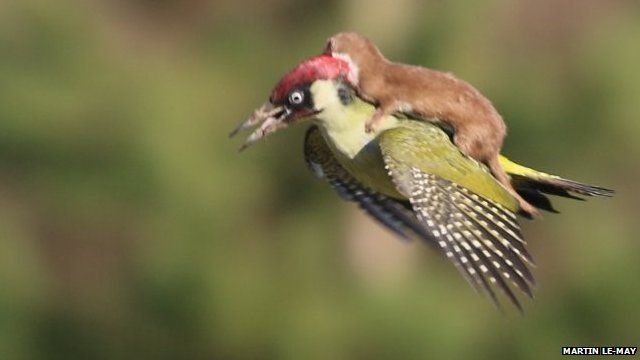
A viral image of a stoat that managed to hitch a ride on the back of a woodpecker
[1] “Global Warming and the American Pika – National Wildlife Federation,” National Wildlife Federation, accessed November 21, 2016, http://www.nwf.org/Wildlife/Threats-to-Wildlife/Global-Warming/Effects-on-Wildlife-and-Habitat/Pika.aspx.
[2] “Critter Catalog.” BioKIDS – Kids’ Inquiry of Diverse Species, Ochotona Princeps, American Pika: INFORMATION. Accessed November 21, 2016. http://www.biokids.umich.edu/critters/Ochotona_princeps/.
[3] “Stoats.” Stoats: Pests. Accessed November 21, 2016. http://www.doc.govt.nz/nature/pests-and-threats/animal-pests/animal-pests-a-z/stoats/.
[4] https://www.youtube.com/watch?v=ODEUK5sB5vE
[5] “Adjustable Living Spaces – Oxford Scholarship.” Oxford Scholarship. 2014. Accessed November 21, 2016. http://www.oxfordscholarship.com/view/10.1093/acprof:oso/9780195322712.001.0001/acprof-9780195322712-chapter-8.
[6] “BBC Nature – Stoat Videos, News and Facts.” Nature Wildlife. Accessed November 21, 2016. http://www.bbc.co.uk/nature/life/Stoat.
Multimedia
Valley: http://il9.picdn.net/shutterstock/videos/9078371/thumb/10.jpg
Owl: https://cmczoo.com/animal_images/01112015092413_snowy-owl-flying-across-a-field-in-falling-snow.jpg
Stoat w/ Prey: http://7wallpapers.net/wp-content/uploads/2016/06/11_Ermine.jpg
Stoat 2: http://www.discoverwildlife.com/sites/default/files/imagecache/800px_530px/gallery/stoat%203.jpg
Stoat Riding Woodpecker: http://ichef1.bbci.co.uk/news/640/media/images/81369000/jpg/_81369147_81369116.jpg
Total Word Count: 1487
Word Count No Quotations: 1444